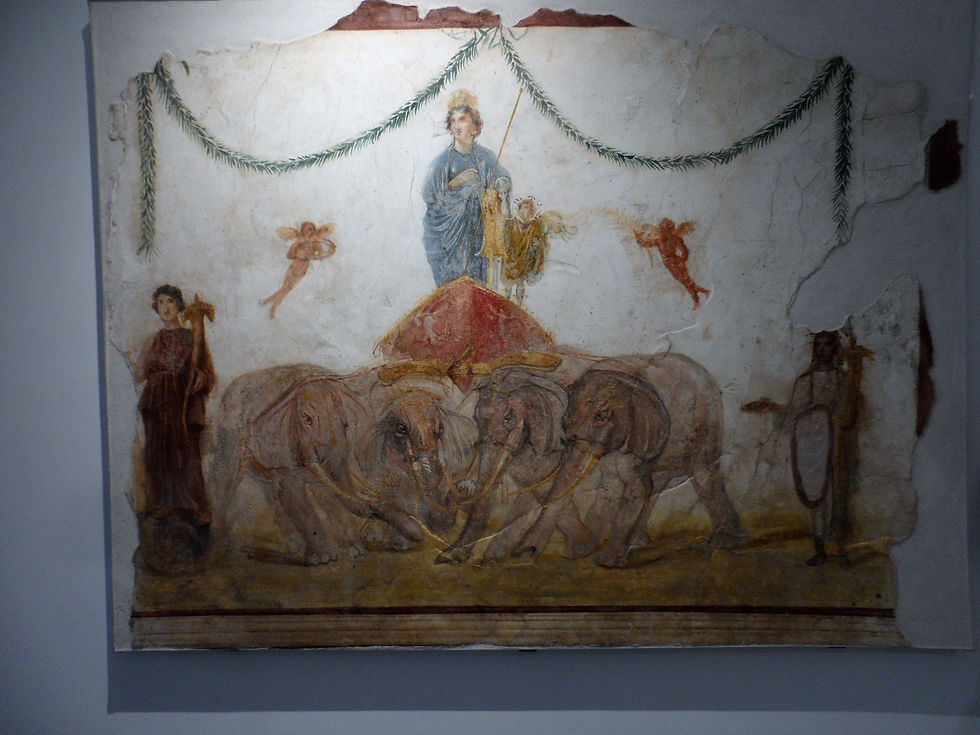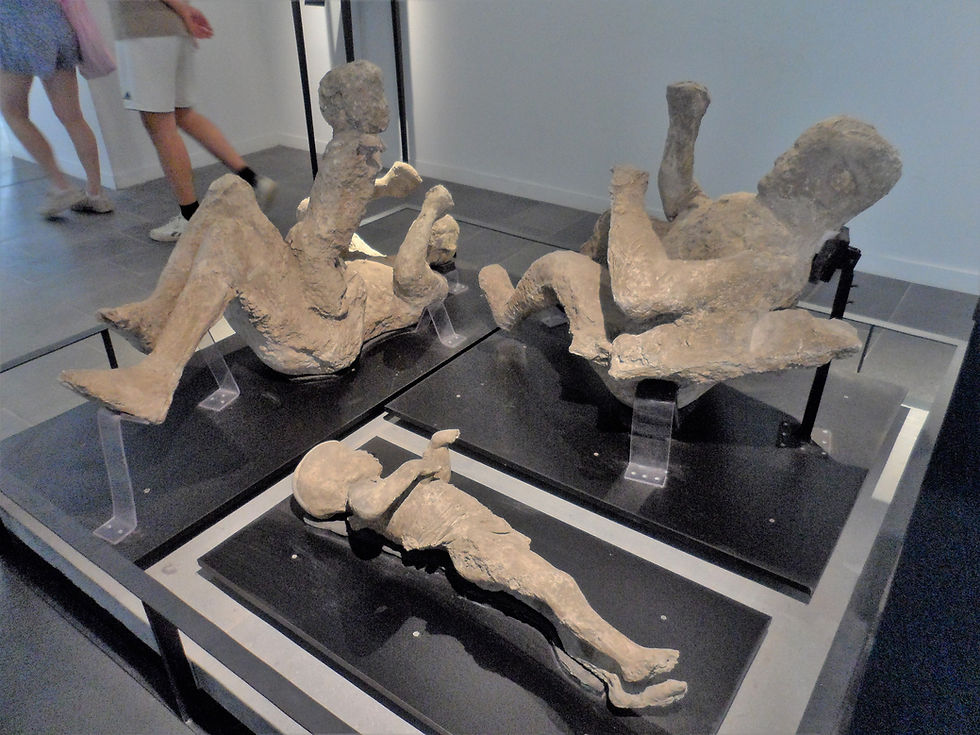Pompeii: the Antiquarium is reborn
- Angelo e Adele
- Sep 30, 2021
- 3 min read
Updated: Dec 14, 2022
Here we are again! We made one of our forays, to document, from our point of view, the reopening of a structure inside the Archaeological Park of Pompeii. We are talking about the Antiquarium, whose history is well illustrated on the official website of the Park (http://pompeiisites.org/pompei-map/antiquarium/): The Antiquarium of Pompeii was built by Giuseppe Fiorelli between 1873 and 1874 in the spaces below the terrace of the Temple of Venus, overlooking Porta Marina. It was the exhibition site for a selection of finds from Pompeii and examples of the daily life of the ancient city, as well as casts of the victims of the eruption. In 1926 it was enlarged by Amedeo Maiuri, who in addition to adding large maps with the updated developments of the excavations from 1748 onwards and inserting new finds from the Villa Pisanella di Boscoreale as well as from the more recent excavations in via dell'Abbondanza, set a path that guided the visitor in the history of Pompeii from its origins to the eruption. The building was then severely damaged by the bombs of World War II in September 1943 and thanks to the restoration work by Maiuri, on 13 June 1948 it reopened to visitors on the occasion of the celebration of the 2nd centenary of the Pompeii excavations. Damaged again, this time by the 1980 earthquake, it has been closed to the public ever since. In 2016, after thirty-six years, it was reopened to the public in the new guise of visitor center and museum space. On January 25, 2021, the Antiquarium was inaugurated with a new layout and became a museum space dedicated to the permanent exhibition of finds that illustrate the history of Pompeii. The space, completely renovated, refers to what was the museum concept of Amedeo Maiuri and through the most relevant finds the history of Pompeii is traced from the Samnite age (4th century BC) to the tragic eruption of 79 AD.
The site continues with a very detailed description of the finds, accompanied by a narration of the history of the city until its destruction. Before moving on to the images, we will provide some logistical indications to access the structure by our means. If you want to visit the Antiquarium only, it is advisable to enter the excavations from the entrance to Piazza Esedra and then reach the ground floor of the building; after having seen the works, you will go up with the elevator to the second floor (the first is currently unused). At the end of the visit, you can go back down to the ground floor and exit the archaeological area from the same door from which you entered. Otherwise you can enter the Archaeological Park from the entrance of Piazza Anfiteatro and follow the tour path equipped for the disabled; along Via dell'Abbondanza, you arrive at the Forum and the Temple of Venus, from which you enter the Antiquarium which can be visited "downhill". Let's now pass to the images, starting with the facade, even if unattainable for us; then we will continue with statues, objects of common use, frescoes, friezes, bas-reliefs, capitals and casts of the bodies of the inhabitants immobilized in the fatal moment:






























And if you missed it when entering the Antiquarium, look up to appreciate this sculpture by Serbian artist Igor Mitoraj. The statue remained in the excavations after an impressive exhibition of the works of this artist was created in 2016, expertly scattered throughout the archaeological area:


Comments